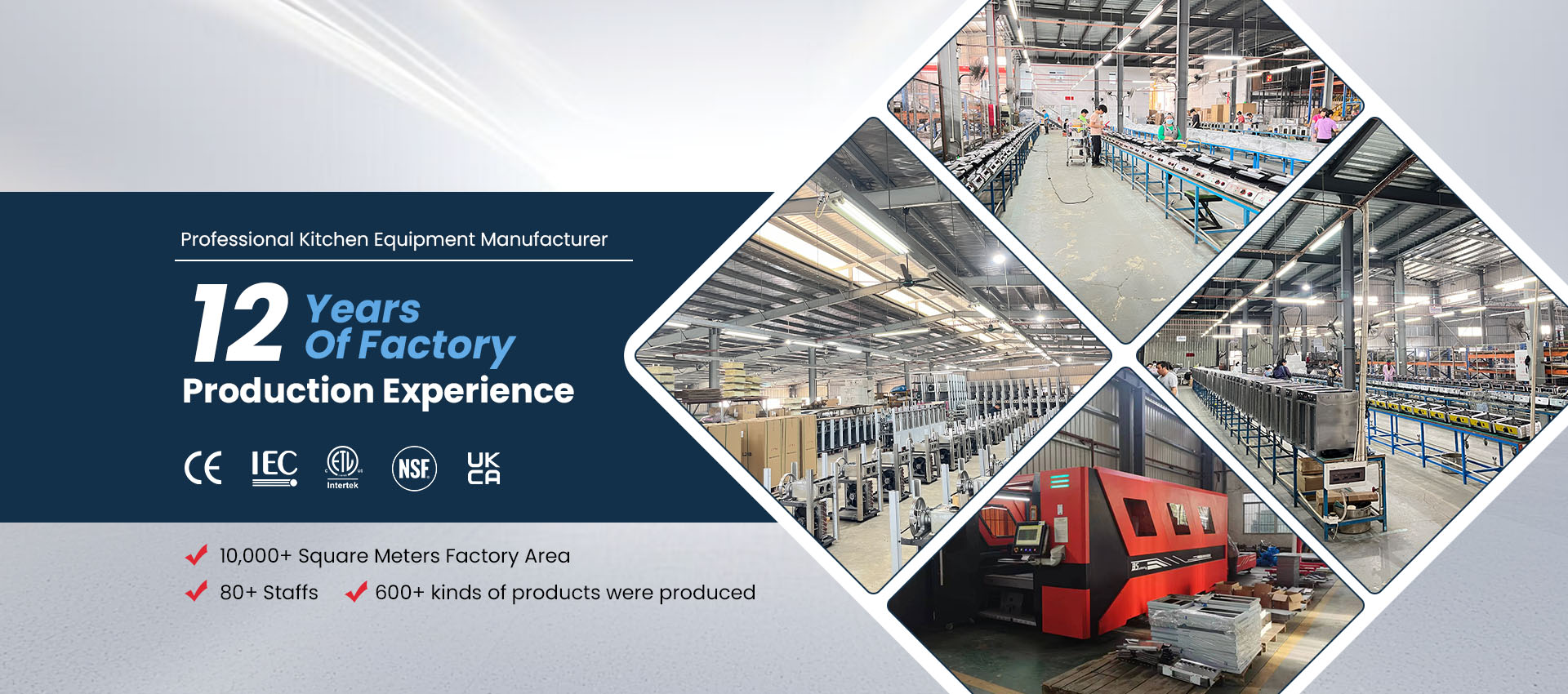How To Fix A Gas Turkey Fryer Burner
A gas turkey fryer delivers powerful heat for outdoor cooking and commercial kitchens alike, but when the burner fails to ignite, burns unevenly, or produces a weak flame, it can interrupt operations or affect cooking quality. Fortunately, most burner problems are easy to diagnose and fix with the right approach.
In this article, we’ll guide you through how to fix a gas turkey fryer burner, covering common causes, safe troubleshooting steps, and why MLP Kitchen Equipment designs its Gas Fryers and burners for reliable performance, durability, and easy maintenance.
1. How a Gas Turkey Fryer Burner Works
Before troubleshooting, it’s important to understand how the burner functions.
A gas fryer burner operates by mixing fuel (propane or natural gas) with air inside a venturi tube. When ignited, the gas-air mixture produces a clean, blue flame that heats the oil evenly.
If any component — such as the orifice, hose, regulator, or air shutter — is blocked or damaged, the flame can become weak, yellow, or fail to light altogether.
2. Common Problems With Gas Fryer Burners
| Symptom | Likely Cause |
|---|---|
| Burner won’t ignite | Blocked orifice, faulty regulator, or closed valve |
| Flame is yellow or smoky | Poor air-to-gas ratio or dirty burner ports |
| Weak flame | Clogged gas line or regulator malfunction |
| Uneven heating | Debris inside burner or incorrect pressure |
| Loud roaring noise | Too much air intake or loose fittings |
Identifying the symptom helps pinpoint where to focus your repair efforts.
3. Tools and Materials You’ll Need
| Tool | Purpose |
|---|---|
| Adjustable wrench | Loosening or tightening fittings |
| Soft brush or wire brush | Cleaning burner ports |
| Needle or pin | Clearing clogged orifices |
| Soapy water solution | Checking for gas leaks |
| Compressed air or vacuum | Blowing out debris |
| Replacement hose or regulator | For damaged parts |
| Protective gloves and goggles | Ensures safety during repair |
4. Step-by-Step: How To Fix a Gas Turkey Fryer Burner
Step 1: Turn Off the Gas Supply
Safety first.
Close the propane tank valve or natural gas line completely. Disconnect the hose and regulator from the fryer before inspecting any components.
Step 2: Inspect the Burner Assembly
Check for visible dirt, rust, or grease buildup on the burner and venturi tube.
If the burner holes (ports) are blocked, they can restrict gas flow, resulting in an uneven flame.
Use a soft brush or compressed air to remove debris from the burner surface and openings.
Step 3: Clean the Orifice
The orifice is a small brass fitting that controls how much gas enters the burner.
Detach the orifice using a wrench.
Use a thin needle or wire to clear any obstruction (do not enlarge the hole).
Rinse with warm soapy water, dry completely, and reinstall.
A clogged orifice is one of the most common reasons for low or irregular flames.
Step 4: Check the Venturi Tube
The venturi mixes gas with air before ignition. Insects or dust can clog this tube, especially if the fryer is stored outdoors.
Remove the venturi tube.
Use a brush or compressed air to clean it thoroughly.
Ensure the air shutter near the tube opening is clear and adjustable.
Proper airflow ensures a steady blue flame rather than a yellow, smoky one.
Step 5: Inspect the Regulator and Hose
If the flame remains weak, the issue may lie in the gas regulator or hose assembly.
Examine the hose for cracks or leaks.
Test with soapy water — bubbles indicate gas leakage.
Replace damaged hoses or regulators immediately.
Make sure the regulator is suitable for your fryer’s gas type and pressure rating (typically 10–15 PSI for propane).
Step 6: Adjust the Air Shutter
If your flame is too yellow or too noisy, fine-tune the air shutter on the venturi tube.
Open it slightly to increase airflow if the flame is yellow.
Close it a bit if the flame is noisy or blows out easily.
You should achieve a clean, blue, steady flame with minimal noise.
Step 7: Reassemble and Test
Reattach all parts — burner, venturi, orifice, and regulator.
Reconnect the gas supply and open the valve slowly.
Ignite the burner and observe the flame:
It should be mostly blue with minimal yellow tips.
The heat should spread evenly across the burner surface.
If problems persist, the issue may involve the internal gas valve or ignition system, which should be checked by a qualified technician.
5. Preventive Maintenance for Fryer Burners
| Task | Frequency | Purpose |
|---|---|---|
| Clean burner ports and venturi | Weekly | Prevent clogs and maintain blue flame |
| Inspect hose and regulator | Monthly | Avoid leaks and pressure issues |
| Check air shutter alignment | Quarterly | Ensure proper air-to-gas ratio |
| Cover fryer when not in use | Always | Prevent insects or debris inside burner |
| Replace damaged components | As needed | Maintain safety and efficiency |
Routine maintenance is the best way to prevent future burner issues.
6. Safety Tips During Burner Repair
Always work outdoors or in a well-ventilated area.
Never use open flames to test for leaks — use soapy water instead.
Allow the fryer to cool completely before handling parts.
Wear heat-resistant gloves when testing burners.
Ensure the gas tank and connections are compatible with the fryer.
Your safety should come before any mechanical adjustment.
7. Why Choose MLP Kitchen Equipment Gas Fryers
MLP Kitchen Equipment, headquartered in Jiangmen City, Guangdong Province, manufactures energy-saving commercial gas fryers, griddles, and cooking ranges trusted by foodservice professionals worldwide.
Our fryers are designed for stable combustion and easy maintenance, with:
High-efficiency burners for powerful, even heat output.
Adjustable air shutters for precise flame control.
Easy-access gas lines and removable components for quick cleaning.
Durable stainless-steel construction that resists corrosion and heat damage.
CE, UL, and UKCA certifications ensuring safety and quality.
Each fryer undergoes rigorous flame and pressure testing, guaranteeing safe and consistent performance in both indoor and outdoor cooking environments.
8. When to Seek Professional Help
If you’ve cleaned and checked all components but the burner still fails to perform correctly, the problem could involve:
Internal gas valve malfunction.
Faulty ignition module.
Damaged thermocouple or safety sensor.
In such cases, contact a qualified gas technician or your fryer manufacturer for service.
9. Conclusion
Fixing a gas turkey fryer burner usually involves cleaning the burner ports, clearing the orifice, checking the venturi tube, and ensuring the regulator and hose are in good condition. Regular maintenance keeps your fryer operating safely and efficiently, ensuring consistent cooking results every time.
For high-performance, low-maintenance commercial fryers, MLP Kitchen Equipment offers precision-engineered gas burners and durable fryer systems that simplify maintenance and ensure long-lasting reliability — the perfect solution for professional kitchens and catering operations worldwide.
Previous: How To Fry Fish In Gas Fish Fryer



